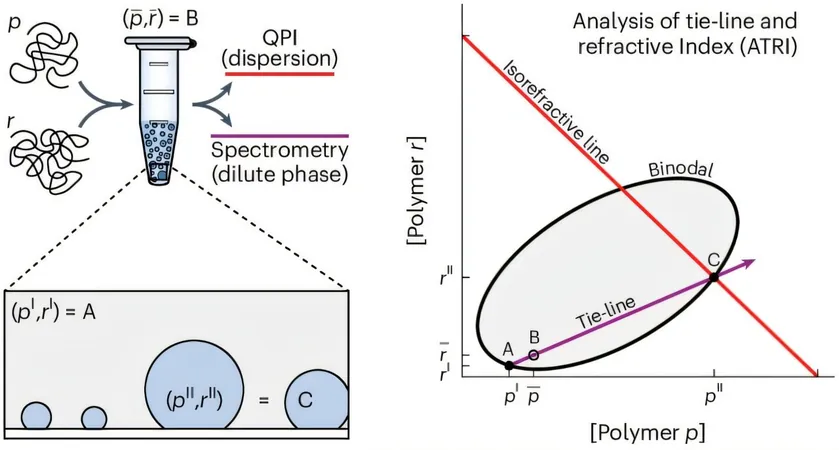
Revolutionary Method Unlocks Secrets of Cellular Condensates Without Fluorescence!
2025-09-03
Author: John Tan
Breakthrough in Biological Research: Understanding Membraneless Organelles
Biological condensates, the tiny but mighty membraneless organelles in our cells, play a crucial role in a variety of cellular processes. Despite their significance, scientists have struggled to accurately quantify their molecular makeup—until now!
Introducing ATRI: A Game-Changing Technique
In a groundbreaking study published in the esteemed journal Nature Chemistry, a team of innovative researchers from the Brugués group, part of Dresden University of Technology, alongside the Leibniz Institute of Polymer Research, and the Max Planck Institute of Molecular Cell Biology and Genetics, have unveiled a transformative experimental method: Analysis of Tie-lines and Refractive Index (ATRI). This label-free technique allows researchers to deduce the components of condensates created from complex mixtures.
How ATRI Works: The Science Behind the Innovation
The genius of ATRI lies in its combination of refractive index measurements with the tie-line—a graphical approach that converges at a particular point indicative of the condensate's composition. Dr. Patrick McCall, the study's lead author, emphasized, "We were able to resolve the concentrations of five distinct molecules in the same condensate, shedding light on how local composition affects physical properties like density and solvent content." This revelation marks a significant leap in the field, as previously, no experiments managed to decipher more than two proteins within a condensate without employing fluorescence.
Implications for Future Research: A New Era of Understanding
By quantitatively revealing the composition of these crucial condensates, ATRI paves the way for scientists to predict their behavior more accurately. This advance allows for deeper exploration into how minute shifts in composition can influence biological functions, opening new avenues for research and potential therapeutic strategies.
Why This Matters: The Future of Cell Biology
As we dive deeper into the intricate world of cellular mechanics, methods like ATRI are essential for advancing our understanding of life at a molecular level. With this new capability, researchers are better equipped to explore the fascinating dynamics of biological systems, heralding a new era in cell biology.



 Brasil (PT)
Brasil (PT)
 Canada (EN)
Canada (EN)
 Chile (ES)
Chile (ES)
 Česko (CS)
Česko (CS)
 대한민국 (KO)
대한민국 (KO)
 España (ES)
España (ES)
 France (FR)
France (FR)
 Hong Kong (EN)
Hong Kong (EN)
 Italia (IT)
Italia (IT)
 日本 (JA)
日本 (JA)
 Magyarország (HU)
Magyarország (HU)
 Norge (NO)
Norge (NO)
 Polska (PL)
Polska (PL)
 Schweiz (DE)
Schweiz (DE)
 Singapore (EN)
Singapore (EN)
 Sverige (SV)
Sverige (SV)
 Suomi (FI)
Suomi (FI)
 Türkiye (TR)
Türkiye (TR)
 الإمارات العربية المتحدة (AR)
الإمارات العربية المتحدة (AR)